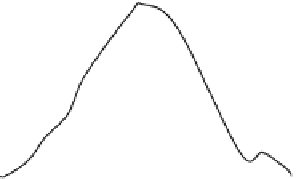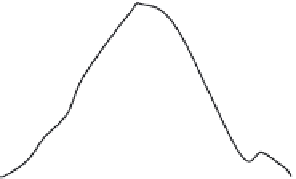Geoscience Reference
In-Depth Information
(a)
Uniform
Non-uniform
P
r
n
F
u
e
P
r
n
F
u
e
A
________
A
____________
B
___________
B
________________
A
_______
B
_________
A
_____________
C
B
_____________
__________________
C
C
C
(b)
Uniform
Non-uniform
Future
F
u
e
A
A
Present
P
r
n
B
B
C
A
A
C
B
B
C
C
Fig. 6.2
(a)Verticalmigrationofspeciesandcommunitiesduetoclimaticwarmingisfrequentlynotuniform.
Individualspeciesrespondtodiferentenvironmentalfactorsdiferently.Consequentlythereislittle
reasonforuniformmigration.AnexampleisgivenrelatingtoFigure4.10.(b)Horizontalmigrationof
speciesisrarelyuniform(seeChapter4withreferencetoglacial-interglacialchange).Aswithvertical
migration,thisisduetodiferentspeciesrespondingwithdiferentsensitivitytodiferentenvironmental
dimensions,ofwhichclimate(itselfmulti-dimensional)isamongmanyotherfactors,whichtogetherwill
determineaspecies'spatialdistribution.Thismakespredictionofecologicalresponsetoclimatechange
difficult.
disjunction was worse, with plant species responding to only 0.02
◦
C of a 1.11
◦
C
warming: there was a larger temperature lag between plant communities in lowland
than highland communities.
The explanation for this is multi-faceted. First, highland areas are more moun-
tainous and so species only need to migrate a short distance horizontally to change
their altitude considerably, and hence their local climatic conditions. This is not so
with lowland species, which have a reduced number of short-distance escapes open
to them. Second, highland species, because of short-distance climate vagaries, are
naturally adapted to be more able to survive a degree of climate variability, and hence






















Search WWH ::

Custom Search